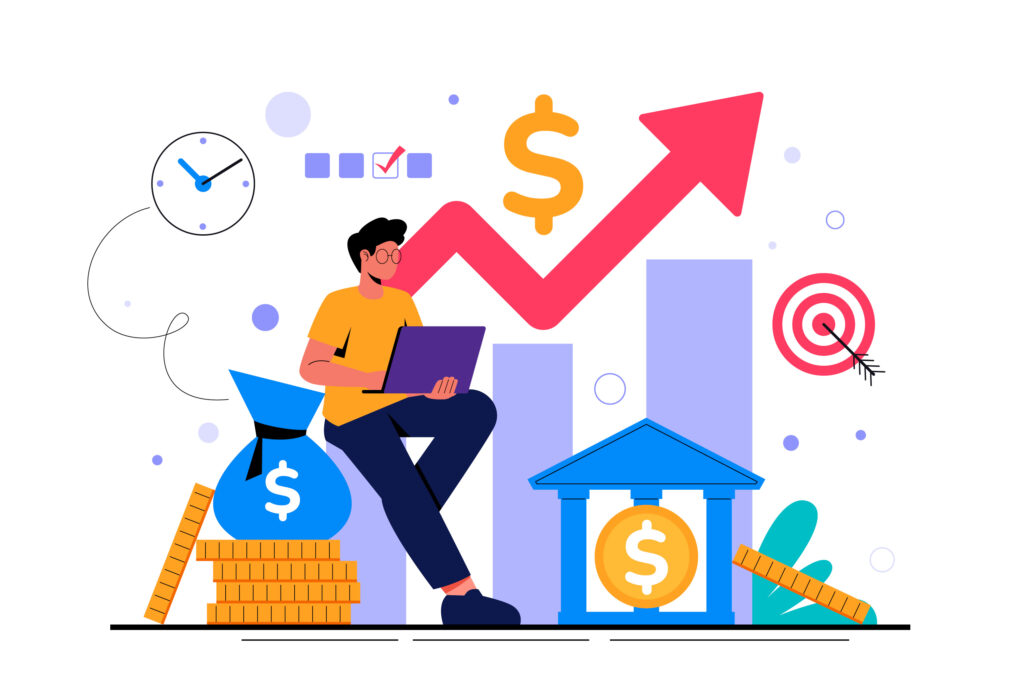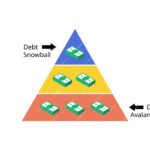Understanding the concept of interest
Interest is a fundamental concept in the world of finance. It is the cost of borrowing money or the return on investment that lenders or investors receive. There are two types of interest: simple interest and compound interest.
Simple interest is calculated only on the principal amount, which means that you earn or owe a fixed percentage of the initial investment or loan. On the other hand, compound interest is the interest calculated on the initial amount as well as the accumulated interest from previous periods. This means that as time goes on, the interest you earn or owe grows exponentially.
The power of compounding
The true magic of compound interest lies in its ability to generate wealth over time. The longer you let your money grow, the more significant its impact becomes. This is because with compound interest, your earnings from interest are reinvested, allowing your wealth to compound exponentially.
For example, let’s say you invest $1,000 at an annual interest rate of 5%. After one year, you would earn $50 in interest, bringing your total investment to $1,050. In the second year, the 5% interest rate would be applied to the $1,050, resulting in an additional $52.50 in interest. In the third year, the interest would be calculated based on $1,102.50, and so on. Over time, the growth becomes more significant, and your wealth multiplies.
How compound interest works
To better understand how compound interest works, let’s break it down into its components: principal, interest rate, compounding period, and time. The principal is the initial amount of money you invest or borrow. The interest rate is the percentage applied to the principal to determine the interest earned or owed. The compounding period is the frequency at which interest is calculated and added to the principal. Finally, time is the duration for which the investment or loan is held.
The formula for calculating compound interest is:
A = P(1 + r/n)^(nt)
Where: A = the future value of the investment or loan P = the principal amount r = the annual interest rate n = the number of times interest is compounded per year t = the number of years
By plugging in the values into this formula, you can calculate the future value of your investment or the total amount owed on a loan.
Examples of compound interest in action
Let’s take a look at a few examples to illustrate the power of compound interest.
Example 1: Sarah starts investing $500 every month in a retirement account with an average annual return of 8%. She continues to do this for 30 years. At the end of the 30-year period, Sarah’s investment would have grown to approximately $1.2 million. This impressive growth is primarily due to the compounding effect of the interest earned over time.
Example 2: John takes out a loan of $10,000 with an interest rate of 6% per year compounded annually. If he makes no payments for 5 years, at the end of the 5-year period, he would owe approximately $13,382. The additional $3,382 is the result of compound interest accumulating on the initial loan amount.
These examples highlight the incredible potential of compound interest to grow your wealth or, in the case of loans, increase your debt burden if not managed properly.
The benefits of starting early
One of the most crucial factors in maximizing the growth potential of compound interest is time. The earlier you start investing or saving, the longer your money has to compound and grow. This is often referred to as the “time value of money.” Even small contributions made consistently over a long period can lead to significant wealth accumulation.
Let’s compare two scenarios to demonstrate the impact of starting early:
Scenario 1: Alex starts investing $200 per month at the age of 25 and continues until the age of 65. Assuming an average annual return of 7%, his investment would grow to approximately $615,000.
Scenario 2: Ben decides to wait until he is 35 to start investing the same amount of $200 per month until the age of 65. With the same average annual return of 7%, his investment would only grow to around $289,000.
By starting just 10 years earlier, Alex’s investment grew more than twice as much as Ben’s. This showcases the power of compound interest and the advantages of starting early.
Strategies for maximizing compound interest
To make the most of compound interest, there are a few strategies you can employ:
- Regular contributions: Consistently contributing to your investments or savings account allows you to take full advantage of compound interest. Whether it’s a monthly contribution or a percentage of your income, the key is to make it a habit.
- Increasing contributions over time: As your income grows, consider increasing your contributions. This not only boosts the amount of money you’re investing but also accelerates the growth potential of compound interest.
- Minimizing fees and expenses: Keep an eye on the fees associated with your investment accounts. High fees can eat into your returns and reduce the overall impact of compound interest. Look for low-cost investment options or consider index funds, which tend to have lower fees.
- Diversify your investments: Spreading your investments across different asset classes and industries can help mitigate risk and increase the potential for higher returns. This diversification can protect your investments and ensure that compound interest works in your favor.
Investing in compound interest vehicles
There are various investment vehicles that allow you to harness the power of compound interest. Some common options include:
- Stocks: Investing in stocks can provide long-term growth potential and the opportunity to earn compound interest through dividends and capital appreciation. However, stocks also come with a higher level of risk.
- Bonds: Bonds are fixed-income securities that pay interest over a specific period. By investing in bonds, you can earn compound interest through regular interest payments and the return of the principal amount at maturity.
- Mutual funds: Mutual funds pool money from multiple investors to invest in a diversified portfolio of stocks, bonds, or other assets. Investing in mutual funds allows you to benefit from compound interest generated by the fund’s underlying investments.
- Retirement accounts: Retirement accounts such as 401(k)s or IRAs offer tax advantages and the potential for compound interest growth. By contributing regularly and taking advantage of employer matching programs, you can turbocharge your retirement savings.
Common misconceptions about compound interest
Despite its power, compound interest is often misunderstood. Here are a few common misconceptions:
- It’s only for the wealthy: Compound interest is for everyone, regardless of income level. Even small amounts can make a significant difference over time.
- It’s a get-rich-quick scheme: Compound interest is not a shortcut to overnight wealth. It requires patience and consistency.
- It can erase poor financial habits: While compound interest can help grow your wealth, it cannot compensate for poor spending or debt management habits. It’s essential to maintain a sound financial plan alongside compound interest.
- It’s only for long-term investments: While compound interest does work best over the long term, it can still have an impact on shorter-term investments. The key is to allow your money to compound for as long as possible.
Conclusion: Harnessing the power of compound interest
Compound interest is a powerful tool that has the potential to transform your financial future. By understanding the concept of compounding, starting early, and employing smart investment strategies, you can maximize the growth potential of compound interest.
Whether you’re saving for retirement, a down payment on a house, or your children’s education, compound interest can help you achieve your financial goals. So, take advantage of this magic financial formula and start building your wealth today. Your future self will thank you.
Remember, compound interest is not a magic wand, but a long-term wealth-building strategy. Stay focused, stay consistent, and watch your wealth grow exponentially over time. Happy investing!
This article is for informational purposes only and does not constitute financial advice. Always consult with a qualified financial professional before making any investment decisions.


